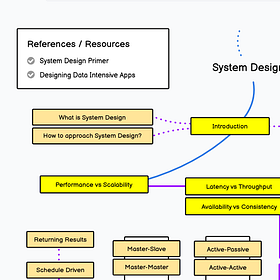Git Power Up: Master Shortlog & Global Ignore - Weekly Tech Tidbits #6
Unlock Advanced Git Functionality with These Powerful Commands to Streamline Contribution Tracking & Repository Housekeeping
Hi 👋, it's great to have you here for this git special issue of Weekly Tech Tidbits. In today's post, we'll cover three intriguing topics:
The git shortlog Command 📝
Setting a Global .gitignore 🚫
Linus Torvalds on Git 📹
Enjoy reading and feel free to share your thoughts in the comments below. Don't forget to subscribe for more insights and share this post with your network! 📢
The git shortlog Command 📝
The git shortlog command in Git is an excellent tool for summarizing commit histories, providing a concise overview of contributions by author and commit message. It groups commits by author, making it perfect for tracking contributions and generating release notes.
Using git shortlog, you can easily see who contributed what to the project. Here’s a basic usage example:
git shortlog <start commit>...<end commit>
git shortlog HEAD~25..HEADThis command summarizes all commits in the specified range, grouped by author and commit message. Here’s a sample output:
10 Jane Doe <jane@example.com>
Fix login issue
Update user profile page
....
5 John Smith <john@example.com>
Initial commit
... This detailed output is ideal for creating a changelog. You can also shorten the output to quickly see who contributed the most:
git shortlog -sneThis command adds the number of commits (-s), sorts by the number of commits (-n), and includes the email addresses of the authors (-e). Here’s how the output might look:
10 Jane Doe <jane@example.com>
5 John Smith <john@example.com>git shortlog is perfect for understanding the overall contribution landscape. Use it to identify active contributors or summarize changes for a new release. 🎉
For more information, check out the Git documentation on git shortlog.
Set a Global .gitignore 🚫
I always used to accidentally add heap dump files (*.hprof) to my Git repositories. It was a hassle to remove them from GitHub once I pushed them accidentally. To avoid this, I set up a global .gitignore to ensure such files are never tracked in any of my projects.
Here’s how to set up a global .gitignore:
Create a Global .gitignore File:
touch ~/dotfiles/.gitignore_globalConfigure Git to Use the Global .gitignore File:
git config --global core.excludesFile ~/dotfiles/.gitignore_globalAdd Common Exclusions
Edit the ~/.gitignore_global file and add patterns for files you always want to ignore. Here’s an example:
# Java heap dumps
*.hprof
# macOS system files
.DS_StoreFor a more comprehensive list of ignore patterns, you can find useful templates at GitHub's gitignore repository.
Setting a global .gitignore helps keep your repositories clean by automatically ignoring files that are not relevant to your projects.
For more information, check out the Git documentation on ignore files.
Linus Torvalds on git 📹
Linus Torvalds, the creator of Git, gave an amazing talk at Google in 2007 (yes, the year the iPhone came out!). As o commenters say, the video quality might be a bit dated (it's 240p), but the content is pure gold – "Content 8k" according to one viewer. In this talk, Linus discusses Git, then a young system at just two years old.
Lean back and enjoy this insightful trip back in tech time!
Wrapping Up
Thank you for reading this week's Weekly Tech Tidbits. Here's a quick recap:
The git shortlog Command: Summarize and understand commit histories efficiently.
Setting a Global .gitignore: Keep your repositories clean by ignoring irrelevant files.
Linus Torvalds on Git: An insightful talk from the creator of Git.
I'd love to hear your thoughts, questions, and feedback in the comments below. 💬 Don't forget to subscribe for more insights 🔔 and share this post with your network! 📢
Changelog:
A reddit user mentioned that it is bad practice to put stuff under
~which is a valid point. I changed it to~/dotfiles/
Kotlin's Scan Function, Fantastic Learning Paths, And More - Weekly Tech Tidbits #5
Hi 👋, it's great to have you here for this issue of Weekly Tech Tidbits. In today's post, we'll cover three intriguing topics: Master Your Learning Paths with roadmap.sh 🚀 Kotlin Gems: The Scan Function 💎 Google Cloud Region Picker 🌍 Enjoy reading and feel free to share your thoughts in the comments below. Don't forget to subscribe for more insights and…
Stay tuned for next week's post.


